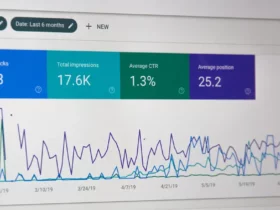The process of conducting a link audit has become a cornerstone of search engine optimization (SEO) strategies. Essentially, link auditing involves a thorough analysis of backlinks pointing to a website, assessing their quality, relevance, and overall impact on search engine rankings. Such a thorough check reveals opportunities for improvement and identifies potentially harmful links that could jeopardize the site’s credibility.
The main goal of this article is to help readers understand the ins and outs of effective backlink management so that they can utilize the full potential of their online presence. We’ll provide website owners and SEOs with the knowledge to help them build a strong, healthy link profile that will help them succeed in the digital sphere.
What is a Link Audit?
A link audit is a comprehensive review of all the backlinks directing traffic to a website, crucial for assessing their quality and relevance. This process enables SEO professionals and website owners to discern which backlinks are beneficial for a site’s search engine ranking. Importantly, it highlights the significance of selecting reputable backlink providers to ensure the integrity of your link profile.
By focusing on high-quality sources, one can maintain a healthy link profile, which is pivotal for positive SEO outcomes, and avoid detrimental links that could impact the website adversely.
Why Are Link Audits Crucial for Website Health?
Link audits are crucial because they directly impact a website’s health and its visibility in search engine results. A healthy link profile, consisting of high-quality and relevant backlinks, signals to search engines that the content is valuable, thereby improving the site’s ranking. Conversely, an unhealthy link profile, populated with spammy or irrelevant links, can negatively affect a site’s SEO performance, potentially leading to penalties from search engines.
Steps to Conduct a Link Audit
Performing a link audit is critical for maintaining the health of your website’s SEO. Here’s a detailed, step-by-step guide on how to make a comprehensive link analysis:
- Gather Your Backlink Data: Utilize tools such as Google Search Console, Ahrefs, SEMrush, or Majestic to collect a comprehensive list of backlinks to your website.
- Assess the Quality of Each Backlink: Evaluate the relevance and authority of the linking sites. High-quality links come from reputable sources within your industry or niche.
- Identify and Categorize Links:
- Good Links: These are from high-authority domains, relevant to your content, and add value to your users.
- Bad Links: Look for signs such as low domain authority, irrelevance, or spammy tactics. These links can harm your SEO.
- Use Metrics for Evaluation: Consider metrics like Domain Authority (DA), Page Authority (PA), Trust Flow, and Citation Flow to assess the value and potential impact of each backlink.
- Decide on Action for Bad Links: For harmful links, consider reaching out to webmasters for removal, or use Google’s Disavow Tool as a last resort.
- Monitor Your Backlink Profile Regularly: Continuous monitoring helps you react to new backlinks promptly and maintain a healthy link profile.
- Document Your Findings and Actions: Keep records of the audit process, including identified links and taken actions, for future reference and strategy adjustment.
The Most Popular Tools for Link Audits
Each tool offers unique features and insights, making them valuable for different aspects of link auditing. Effectively using these tools requires understanding their metrics and how they can be applied to assess and improve your backlink profile. Regular use will provide a deeper understanding of your site’s backlink health and areas for improvement.
Google Search Console
- Features: It directly integrates with Google’s search data to provide insights on your site’s performance, including backlinks.
- Usage: Verify your site ownership and navigate to the “Links” section to view your external and internal links. The tool is useful for identifying which domains link to you the most and which of your pages are the most linked.
Ahrefs
- Features: It offers rich functionality to learn how to manage backlinks and site audits, while also providing content exploration tools. The instrument is known for its extensive database of live backlinks.
- Usage: Use the “Site Explorer” tool to input your domain and get a comprehensive backlink report. Ahrefs grades links with proprietary metrics like Domain Rating (DR) and URL Rating (UR), helping prioritize link intervention efforts.
SEMrush
- Features: It provides a suite of SEO tools, including backlink tracking, keyword research, and competitive analysis.
- Usage: The “Backlink Analytics” section allows you to examine your backlink profile and compare it against competitors. SEMrush offers insights into the types of backlinks (text, image, form, etc.) and their geographical distribution.
Majestic
- Features: It specializes in backlink analysis with metrics like Trust Flow and Citation Flow, designed to evaluate the quality and quantity of links.
- Usage: Enter your domain in the search bar to access a detailed backlink breakdown. Majestic’s visual tools, such as the Link Graph, can help visualize the link ecosystem around your site.

Top 5 Tips for Building a Sustainable Backlink Portfolio
Developing a robust link management strategy is essential for maintaining and enhancing your website’s SEO performance over time. This ongoing process involves regular monitoring of your backlink profile to ensure its health and effectiveness. By adopting a proactive approach to link management, you can prevent potential SEO issues and capitalize on opportunities to improve your site’s authority and visibility.
Below are key tips for building and maintaining a healthy backlink portfolio:
- Diversify Your Link Sources
Aiming for backlinks from a broad range of reputable sites across different industries and niches can significantly enhance your site’s perceived authority by search engines. It reduces the risk associated with algorithm changes and prevents your site from being overly reliant on a single source of backlinks.
- Focus on High-Quality Content
Creating content that provides genuine value to your audience can naturally attract high-quality backlinks. This includes in-depth articles, insightful research, compelling infographics, and engaging videos that viewers are more likely to share and reference.
- Engage in Community and Network Building
Active participation in industry forums, social media groups, and professional networks can increase your brand’s visibility and encourage organic backlinks. By contributing valuable insights and information, you can establish your site as an authoritative source within your niche.
- Monitor Competitor Backlinks
Analyzing your competitors’ backlink profiles can reveal new linking opportunities and strategies. Tools like Ahrefs and SEMrush allow you to see where their backlinks are coming from, helping you to identify potential sites to target for your link-building efforts.
- Use Guest Posting Wisely
While guest posting can be an effective way to acquire backlinks, focus on quality over quantity. Contribute well-researched and well-written articles to reputable sites within your niche. This not only helps in building backlinks but also in establishing your expertise and reaching a wider audience.
By paying attention to such an essential aspect of website promotion as building high-quality backlinks and monitoring them regularly, website owners can hope for convincing results from search engines.












